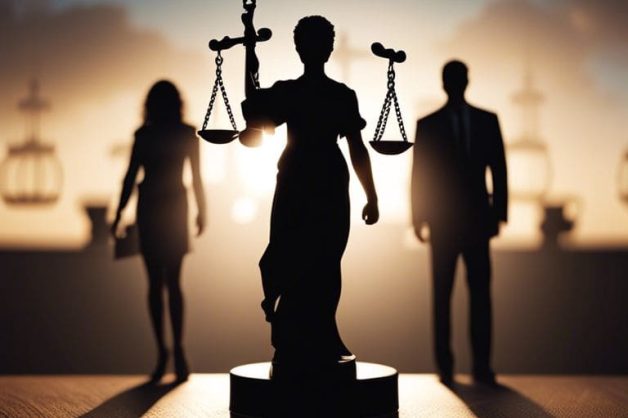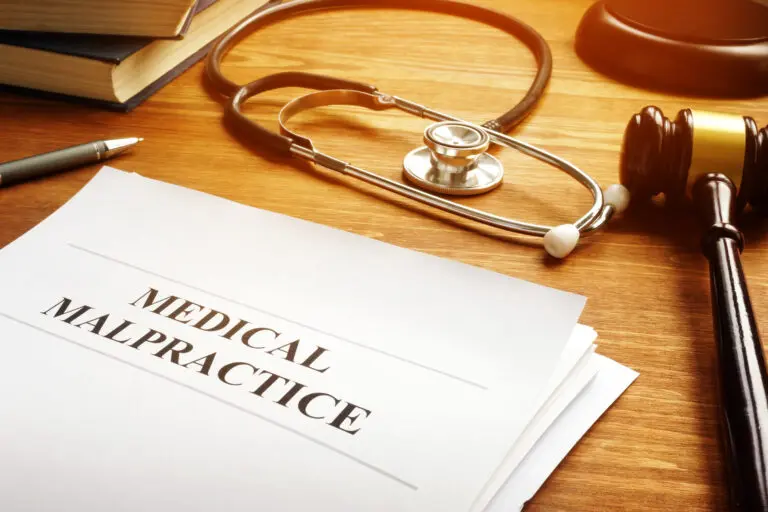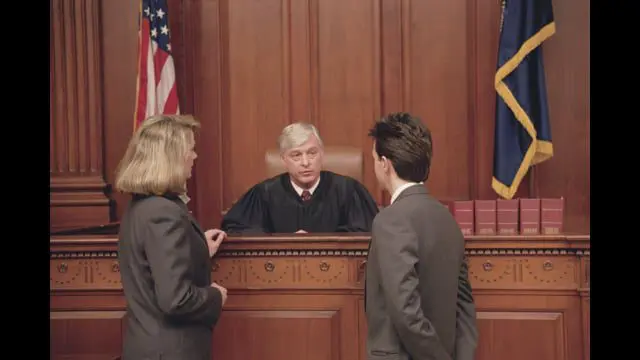Equal protection under the law is a foundational principle enshrined in the United States Constitution. This concept ensures that individuals are treated fairly and equally by the legal system, protecting them from discrimination based on characteristics such as race, gender, and religion. This article delves deeply into the legal rights and implications of equal protection, exploring its origins, applications, and current trends in the legal landscape.
The Origins of Equal Protection
El concepto de equal protection arises from the Fourteenth Amendment to the U.S. Constitution, ratified in 1868. The amendment was a cornerstone of the Reconstruction era, aimed at establishing equal rights for former slaves and addressing inequalities perpetuated by state laws. The Equal Protection Clause within the amendment states: “No State shall … deny to any person within its jurisdiction the equal protection of the laws.”
This clause fundamentally changed the legal framework of the United States, requiring states to apply the law equally to all individuals, regardless of their status. The Civil Rights Act of 1866 and subsequent derechos civiles legislation further cemented these protections, making it illegal to discriminate based on race, color, or previous condition of servitude.
Legal Interpretations and Landmark Cases
Over the years, the Equal Protection Clause has been the basis for numerous landmark Tribunal Supremo cases that have shaped the interpretation and application of equal protection in the United States.
Brown v. Board of Education (1954) is perhaps the most well-known case related to equal protection. The Supreme Court unanimously ruled that racial segregation in public schools violated the Equal Protection Clause, declaring that “separate but equal” facilities are inherently unequal. This decision was a significant step forward in the fight against racial discrimination and paved the way for the desegregation of public institutions across the country.
Another critical case is Loving v. Virginia (1967), where the Supreme Court struck down state laws prohibiting interracial marriage. The Court held that these laws violated the Equal Protection Clause because they were based on invidious racial discrimination. This case not only reinforced the principle of equal protection but also underscored the importance of personal liberties and the right to marry.
Obergefell v. Hodges (2015) is a more recent example, where the Supreme Court ruled that same-sex marriage is a constitutional right under the Equal Protection Clause. This landmark decision recognized the dignity and equality of same-sex couples, ensuring that they have the same legal recognition and protections as opposite-sex couples.
Equal Protection in Contemporary Legal Issues
Equal protection continues to be a critical issue in contemporary legal disputes. One prominent area is the fight against gender discrimination. The Equal Protection Clause has been used to challenge laws and practices that treat individuals differently based on gender. For example, in United States v. Virginia (1996), the Supreme Court ruled that the Virginia Military Institute’s male-only admissions policy violated the Equal Protection Clause, as it denied women the same opportunities available to men.
Discrimination based on sexual orientation and gender identity is another critical area where equal protection is at the forefront. Legal battles continue to emerge over issues such as employment discrimination, access to healthcare, and public accommodations for LGBTQ+ individuals. The Supreme Court’s decision in Bostock v. Clayton County (2020) extended protections under Title VII of the Civil Rights Act to LGBTQ+ employees, ruling that discrimination based on sexual orientation or gender identity constitutes sex discrimination and violates federal law.
Equal Protection and Affirmative Action
Affirmative action policies, designed to address historical inequalities and promote diversity, often come under scrutiny in the context of equal protection. These policies can include measures such as race-conscious admissions in educational institutions and employment practices aimed at increasing representation of marginalized groups.
The legality and ethics of affirmative action have been debated extensively, with the Supreme Court weighing in on several key cases. In Regents of the University of California v. Bakke (1978), the Court upheld the use of race as one of many factors in college admissions but struck down the use of racial quotas. More recently, in Fisher v. University of Texas (2016), the Court reaffirmed that race-conscious admissions policies are permissible under the Equal Protection Clause, provided they are narrowly tailored to achieve the compelling interest of diversity.
Despite these rulings, affirmative action remains a contentious issue, with ongoing legal challenges and public debates about its role in promoting igualdad de oportunidades versus perpetuating reverse discrimination.
Equal Protection in the Criminal Justice System
En Equal Protection Clause also plays a vital role in the sistema de justicia penal, ensuring that individuals are not subjected to discriminatory practices in law enforcement, prosecution, and sentencing. Racial disparities in the criminal justice system have been a significant concern, with evidence showing that people of color are disproportionately affected by policing practices, incarceration rates, and harsher sentences.
Efforts to address these disparities include legal challenges to practices such as racial profiling, biased jury selection, and sentencing guidelines that disproportionately impact minority communities. Batson v. Kentucky (1986) is a landmark case where the Supreme Court ruled that prosecutors cannot exclude potential jurors solely based on race, as it violates the Equal Protection Clause. This decision aimed to ensure fairer trials and more representative juries.
Reforming the criminal justice system to address racial disparities and ensure equal protection for all individuals remains a critical challenge. Ongoing efforts include legislative reforms, policy changes, and community advocacy aimed at creating a more equitable legal system.
Equal Protection and Voting Rights
Voting rights are another essential aspect of equal protection, ensuring that all citizens have the opportunity to participate in the democratic process. The Voting Rights Act of 1965 was a landmark piece of legislation designed to eliminate racial discrimination in voting and protect the voting rights of minority groups.
However, challenges to voting rights continue to arise, particularly with laws and policies that may disproportionately impact minority voters. Legal battles over voter ID laws, redistricting, and access to polling places often invoke the Equal Protection Clause to argue that such measures discriminate against certain groups and infringe upon their voting rights.
The Supreme Court’s decision in Shelby County v. Holder (2013) significantly weakened the Voting Rights Act by striking down the coverage formula used to determine which jurisdictions required federal oversight for changes to voting laws. This ruling has led to increased scrutiny of voting rights issues and ongoing efforts to protect and expand access to the ballot for all citizens.
Equal Protection and Education
The right to equal protection extends significantly into the realm of education, ensuring that all students have access to quality education regardless of their background. Issues such as school funding disparities, segregation, and discriminatory policies often come under scrutiny in this context.
The landmark case Brown v. Board of Education established the principle that segregation in public schools is inherently unequal, leading to widespread desegregation efforts. Despite this, many schools today still face significant inequalities in resources and opportunities, particularly in low-income and minority communities.
Legal efforts continue to address these disparities, with lawsuits challenging inequitable funding models and advocating for policies that promote equal access to educational resources. Programs aimed at closing the achievement gap and providing support to underserved students are also critical components of ensuring equal protection in education.
Equal Protection and Employment
In the workplace, equal protection is essential for preventing discrimination and promoting fair treatment. Employment discrimination based on race, gender, age, disability, and other characteristics is prohibited under various federal laws, including Title VII of the Civil Rights Act, the Americans with Disabilities Act, and the Age Discrimination in Employment Act.
Legal challenges in this area often involve issues such as hiring practices, pay equity, harassment, and wrongful termination. The Supreme Court’s decision in Bostock v. Clayton County significantly expanded protections for LGBTQ+ employees, ensuring that discrimination based on sexual orientation or gender identity is considered sex discrimination under Title VII.
Employers must navigate these legal requirements carefully, implementing policies and practices that promote diversity, equity, and inclusion. Training programs, anti-discrimination policies, and robust complaint procedures are critical components of fostering a fair and inclusive workplace.
Equal Protection in Healthcare
Healthcare access and equity are critical issues in the context of equal protection. Disparities in healthcare access, quality, and outcomes disproportionately affect minority and low-income populations. Legal efforts to address these disparities often focus on ensuring nondiscriminatory practices in healthcare delivery and expanding access to healthcare services.
The Affordable Care Act (ACA) includes provisions aimed at reducing healthcare disparities, such as expanding Medicaid coverage and prohibiting discrimination based on race, color, national origin, sex, age, or disability. Legal challenges to these provisions continue to shape the landscape of healthcare equity, with ongoing debates about the scope and impact of the ACA.
Equal Protection and Housing
Equal protection also extends to housing, addressing issues such as discriminatory lending practices, redlining, and unequal access to housing opportunities. The Fair Housing Act of 1968 prohibits discrimination in housing based on race, color, national origin, religion, sex, familial status, or disability.
Legal challenges in this area often involve cases of discriminatory practices by landlords, real estate agents, and financial institutions. Efforts to promote fair housing include enforcing anti-discrimination laws, advocating for affordable housing policies, and addressing systemic barriers to housing access.
Challenges and Criticisms of Equal Protection Enforcement
While the principle of equal protection is enshrined in law, its enforcement faces numerous challenges. Discrimination can be subtle and systemic, making it difficult to address through legal means alone. Additionally, disparities in resources and access to legal representation can affect individuals’ ability to pursue justice.
Critics of current equal protection enforcement argue that the legal system must evolve to address these challenges more effectively. This includes expanding legal protections, improving access to justice, and addressing the root causes of discrimination.
Role of Advocacy and Non-Governmental Organizations
Advocacy groups and non-governmental organizations (NGOs) play a critical role in promoting and defending equal protection rights. These organizations work to raise awareness, provide legal assistance, and advocate for policy changes that advance equality.
Groups such as the American Civil Liberties Union (ACLU)El NAACP Legal Defense and Educational Fund, and Lambda Legal are at the forefront of legal battles to protect and expand equal protection rights. Their efforts include filing lawsuits, lobbying for legislative reforms, and providing support to individuals facing discrimination.
Legislative and Policy Reforms
Ongoing legislative and policy reforms are essential to advancing equal protection. Recent efforts include expanding protections for LGBTQ+ individuals, addressing systemic racism in the criminal justice system, and promoting equity in education and employment.
For example, the proposed Equality Act seeks to provide comprehensive protections against discrimination based on sexual orientation and gender identity. Similarly, criminal justice reform efforts aim to reduce racial disparities, improve policing practices, and ensure fair sentencing.
Technological and Digital Age Considerations
The rise of technology and the digital age introduces new challenges and opportunities for equal protection. Issues such as algorithmic bias, data privacy, and digital discrimination require updated legal frameworks to ensure that technological advancements do not perpetuate existing inequalities.
Efforts to address these challenges include developing ethical guidelines for artificial intelligence, implementing robust data protection laws, and ensuring that digital platforms promote inclusivity and fairness.
Intersectionality in Equal Protection
The concept of intersectionality recognizes that individuals may face multiple, overlapping forms of discrimination. Legal frameworks must account for this complexity, ensuring that protections are comprehensive and address the unique experiences of those affected by intersecting forms of bias.
For example, women of color may face discrimination that is both racial and gender-based, requiring a nuanced approach to legal protections. Addressing intersectionality involves expanding legal definitions, improving data collection, and developing targeted policies that address multiple dimensions of inequality.
Future Directions and Predictions
As society continues to evolve, the concept of equal protection must adapt to new challenges and opportunities. Future directions may include expanding legal protections, addressing emerging forms of discrimination, and promoting global human rights standards.
Advancements in technology, changes in social norms, and evolving legal landscapes will shape the future of equal protection. By staying informed and proactive, legal professionals, policymakers, and advocates can work towards a more just and equitable society.
Conclusión
Equal protection under the law is a fundamental principle that ensures individuals are treated fairly and equally by the legal system. From its origins in the Fourteenth Amendment to its application in landmark Supreme Court cases, equal protection has played a crucial role in shaping the legal landscape of the United States.
As new legal challenges and societal changes continue to emerge, the concept of equal protection must evolve to address the complexities of modern discrimination and ensure that all individuals have the opportunity to enjoy their legal rights fully. By understanding the historical context, legal interpretations, and current trends in equal protection, we can work towards a more just and equitable society.
Key Features of Attorneys.Media:
- Educational Video Content: The platform demystifies complex legal concepts through video interviews, making it easier for individuals to grasp various aspects of the law.
- Expert Insights: Interviews with specialized lawyers provide in-depth understanding of legal processes, rights, and considerations in different contexts.
- Public Resource: Abogados.Media serves as a dynamic resource for those seeking legal information, catering to the growing preference for visual and auditory learning.
- Professional Visibility: For profesionales del derecho, the platform offers a unique opportunity to showcase expertise and engage with a broader audience, potentially expanding their client base.
- Broad Spectrum Coverage: The video interviews cover a wide range of legal topics, enhancing public knowledge about legal matters in Derecho Civil, Derecho penal y Otras cuestiones jurídicas.
Business Model:
- Educación pública: Enhancing the public’s understanding of legal issues and Comentario jurídico through accessible video content.
- Attorney Promotion: Providing attorneys with a platform to highlight their expertise and connect with potential clients. GET INTERVIEWED.
Unique Approach:
Abogados.Media represents a modern approach to legal education and consultation. It facilitates public knowledge of legal issues and connects individuals with local attorneys for consultations, promoting a better-informed society.
This unique combination of educational content and professional promotion positions Attorneys.Media as a valuable resource for both the general public and legal professionals.









